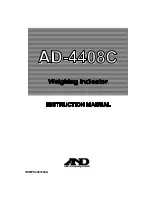
5
This procedure is only valid when run as a continuation of the
eXact
®
Strip Micro CL (DPD-1) Test Procedure on page 4.
DPD-3 Combined Chlorine Test Procedure
CL1
CL
eXact
®
Strip Micro CL (DPD-1/DPD-3/DPD-4) Interferences (part nos. 486637/486638/486670)
Interfering Substance
Acidity
Alkalinity
Bromine & Bromamines, Br
2
Chlorine Dioxide, ClO
2
Copper, Cu
+2
Iodine, I
2
Manganese, oxidized (Mn
+4
, Mn
+7
)
or Chromium, oxidized (Cr
+6
)
Monochloramines (NH
2
Cl)
(applies to DPD-1 only)
Ozone, O
3
Peroxides
pH
Interfering Levels & Treatments
If sample has acidity above 150mg/L CaCO
3
test may not develop
full color. Neutralize to pH 6.0 to 7.0 with 0.5N Sodium hydroxide.
If sample has alkalinity above 200mg/L CaCO
3
test may not develop
full color. Neutralize to pH 6.0 to 7.0 with 0.5N Sulfuric acid.
Color similar to free chlorine reaction at all levels.
Color similar to free chlorine reaction at all levels.
Color development is reduced above 10 ppm (mg/L).
Color similar to free chlorine reaction at all levels.
See AWWA procedure 4500-CL F, 1(d) for removal of interferences.
Monochloramine interferences are known to occur in free chlorine
DPD methods. This interference is dependent on temperature and
monochloramine concentration.
Color similar to free chlorine reaction at all levels.
Interference is possible.
Typical pH samples of potable water with a pH of 6.0 to 9.0 are
OK. If outside this range adjust to pH 6.0 to 7.0 using acid
(0.5N Sulfuric acid) or base (0.5N Sodium hydroxide).
CL1: Chlorine and Iodine react with N,N-diethyl-p-phenylenediamine as it is released from the strip to
form a magenta color, directly proportional to the Chlorine concentration. (Ozone, Bromine, and
Permanganate also form the same color)
8
Remove one (1)
eXact
®
Strip Micro CL (DPD-3), Part No. 486638
from the bottle before
beginning the test. Set the strip in a dry, convenient place and recap the bottle immediately.
REMOVE STRIP
9
Dip the
eXact
®
Strip Micro CL (DPD-3)
into the
CELL
and immediately press
READ
. This
starts the
20 SECOND
countdown timer. During this time move the strip in a gentle back
and forth motion (approx. 2 strokes/sec).
Remove and discard the strip when “1” on the
display disappears
. The cursor will move across the display while the meter prepares to
measure the sample. This result is automatically stored in CL1 (NOTE: The Iodide added with
DPD-3 will, in the presence of Combined Chlorine or Chloramines, convert into Iodine).
DIP STRIP AND PRESS “READ”
10
PRESS READ AGAIN
Press
READ
again and the meter will count down and display the next reading. If this
reading matches the previous result, then record this as the Total Chlorine result. This value
is automatically stored in CL1. After testing is completed, rinse cell immediately. Record the
Total Chlorine as the highest value the meter displayed.
*NOTE
: Standard Method (4500-Cl G, procedure for total chlorine) requires the reading to
be made after 2 minutes from the time the KI is added. For compliance testing, you must
time the two minutes and then make your measurement. NOTE: From testing in our lab,
water samples above 70°F (20°C), generally, reach a stabilized reading quicker then 2 minutes.






























